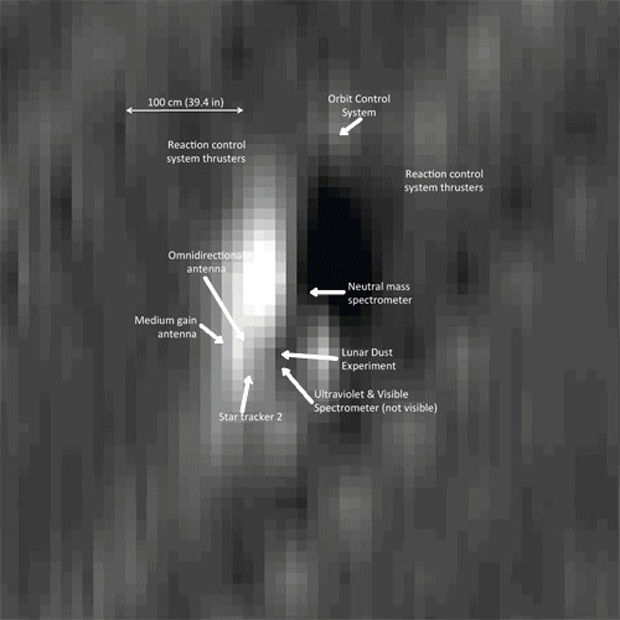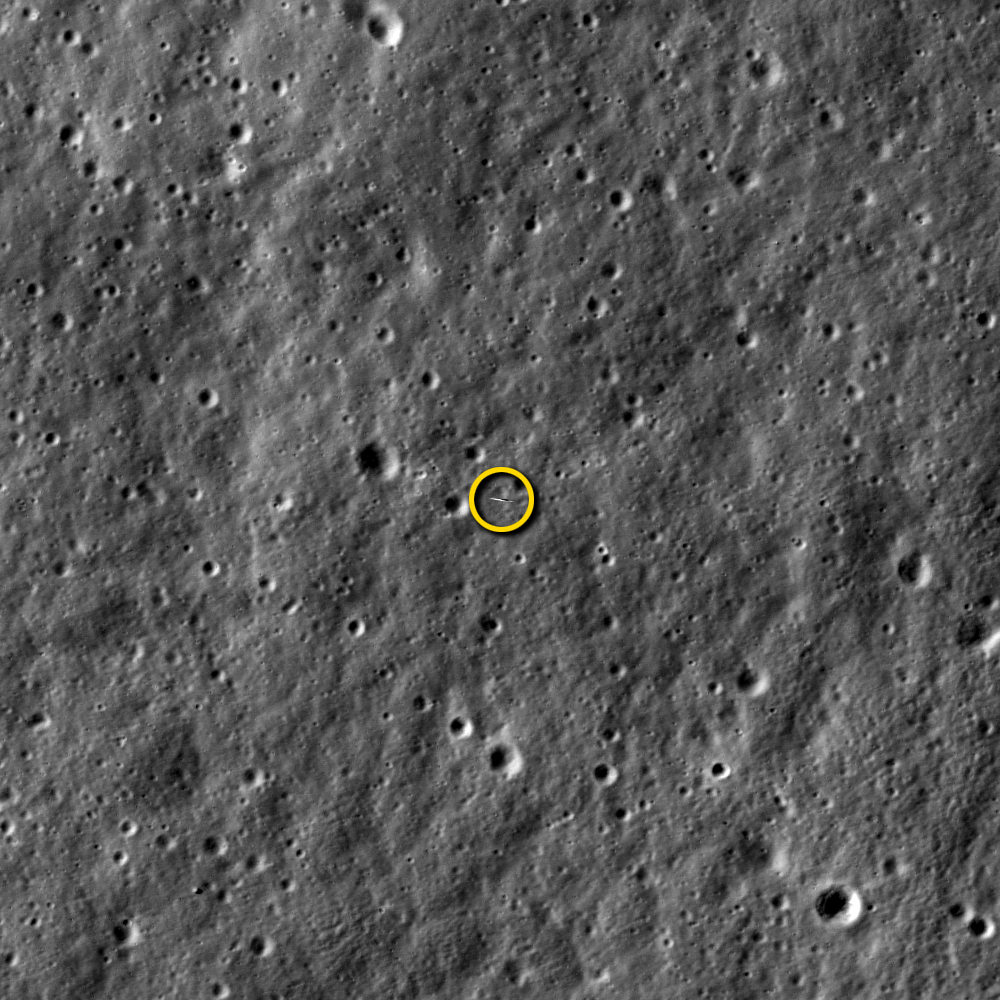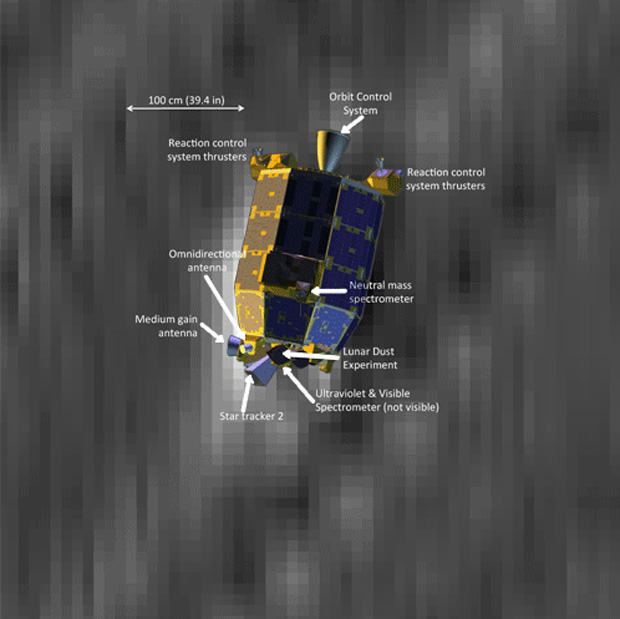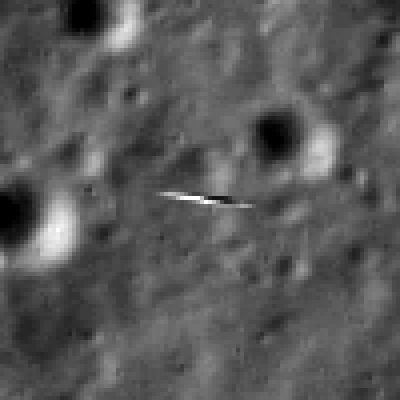NASA Moon Probe Spotted by Robotic Lunar Sibling (Photos)

In a moment of lunar synchronicity, a moon-orbiting NASA probe spied another one of the space agency's spacecraft from its spot in orbit.
The Lunar Reconnaissance Orbiter caught sight of NASA's LADEE moon dust probe as both spacecraft sped around the moon at nearly 3,600 mph (1,600 meters per second) on Jan. 14. LRO and LADEE were a mere 5.6 miles (9 kilometers) apart as the photo was taken.
LADEE (the name is short for Lunar Atmosphere and Dust Environment Explorer) can barely be seen as a somewhat blurry smudge above the moon's pockmarked surface, however this photo was no accident. The LRO and LADEE teams worked together to be sure that the magic moment was preserved, rolling LRO 34 degrees to the west to be sure to capture LADEE at the right moment. [See more photos LADEE taken by NASA's Lunar Reconnaissance Orbiter]

"As planned at 8:11 p.m. EST on Jan. 14, 2014, LADEE entered LRO’s Narrow Angle Camera (NAC) field of view for 1.35 milliseconds and a smeared image of LADEE was snapped," NASA officials wrote in an image description.
NASA's LRO has a history of spotting other spacecraft from orbit. In December, the probe photographed China's first moon lander and rover — called Chang'e 3 and Yutu respectively — on the lunar surface, marking the first soft-landing on the moon since 1976.

LADEE took measurements before and after the Chinese touchdown to see how the landing impacted the lunar dust environment from its post in orbit.
"LADEE's science instruments gathered data on the dust and gas species before and after the landing to provide the science team with a comparison," Rick Elphic, LADEE project scientist, wrote in a mission update. "The Neutral Mass Spectrometer (NMS) was running in a mode that would allow it to monitor native lunar atmospheric species, as well as those resulting from Chang'e 3's propulsion system."
Get the Space.com Newsletter
Breaking space news, the latest updates on rocket launches, skywatching events and more!

LADEE launched into space on Sept. 6, 2013 to investigate lunar mysteries from orbit around the moon. The loveseat-size spacecraft is designed to probe the thin lunar atmosphere to gather data about the moon's dusty environment. The spacecraft is also going to investigate moon dust mystery dating back to before the Apollo program.
The $504 million LRO probe launched to space in 2009 carrying seven science instruments with it. It is about the size of a Mini Cooper car and orbits about 31 miles (50 km) above the moon's surface.
Follow Miriam Kramer @mirikramer and Google+. Follow us @Spacedotcom, Facebook and Google+. Original article on SPACE.com.
Join our Space Forums to keep talking space on the latest missions, night sky and more! And if you have a news tip, correction or comment, let us know at: community@space.com.

Miriam Kramer joined Space.com as a Staff Writer in December 2012. Since then, she has floated in weightlessness on a zero-gravity flight, felt the pull of 4-Gs in a trainer aircraft and watched rockets soar into space from Florida and Virginia. She also served as Space.com's lead space entertainment reporter, and enjoys all aspects of space news, astronomy and commercial spaceflight. Miriam has also presented space stories during live interviews with Fox News and other TV and radio outlets. She originally hails from Knoxville, Tennessee where she and her family would take trips to dark spots on the outskirts of town to watch meteor showers every year. She loves to travel and one day hopes to see the northern lights in person. Miriam is currently a space reporter with Axios, writing the Axios Space newsletter. You can follow Miriam on Twitter.








